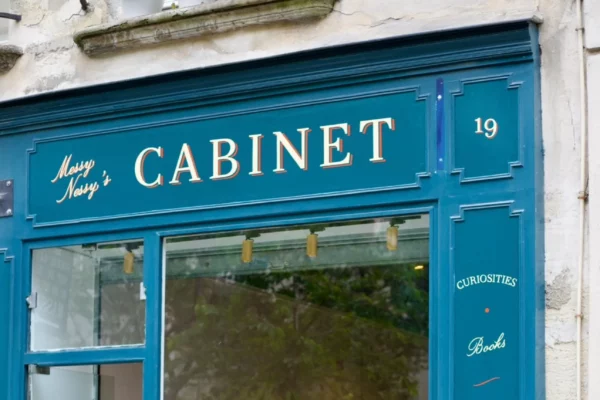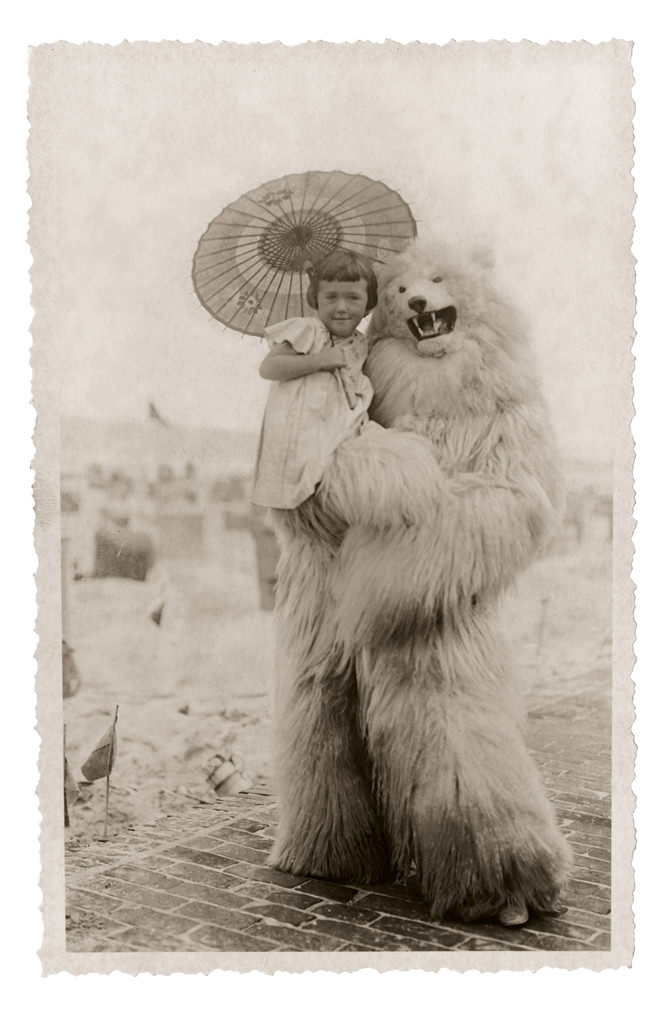
Once upon a meme, Germany had its own precursor to the internet’s LOLcat – in the form of a life-sized fake polar bear. As the story goes, some time in the early 1920s, two (actual) polar bears arrived at the Berlin Zoo and became the talk of the town. Families came from all over the country to see the bears and to get their pictures taken with the zoo’s mascots (a couple of guys in costumes who stood outside the gates to welcome tourists). The trend took off from there and gave rise to a nationwide phenomenon which lasted until the 1970s, spanning a whole period from pre-war to to post-war Germany. It’s safe to say that vacation photo albums of the era just weren’t complete without a snap with a fake polar bear. As well as smiling tourists, there are photographs of SS soldiers, American GI’s and officers from East Germany, all striking friendly poses with the bears…
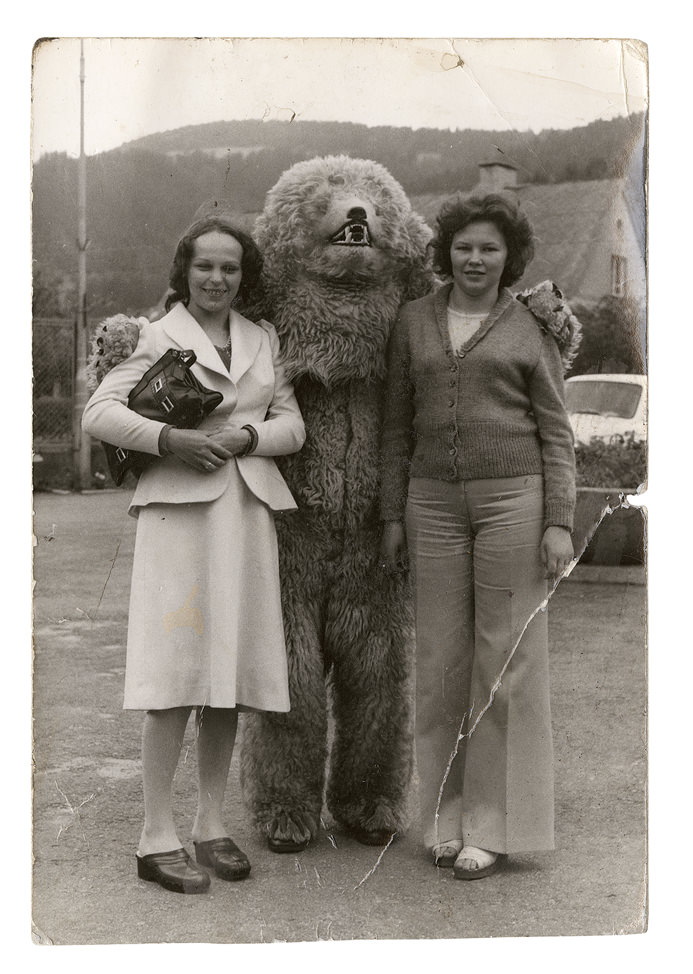
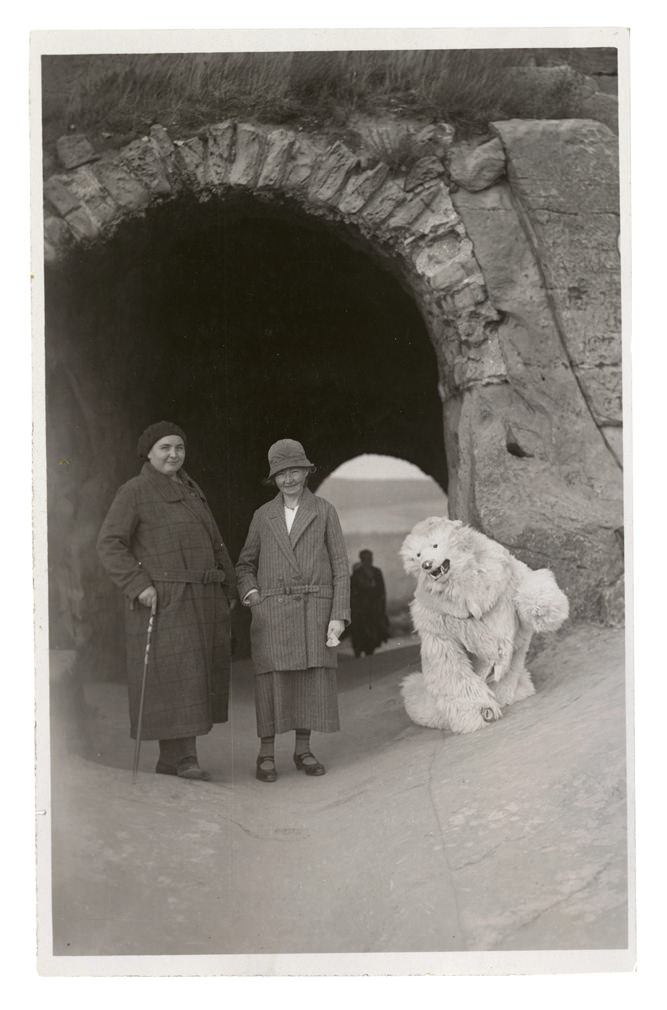
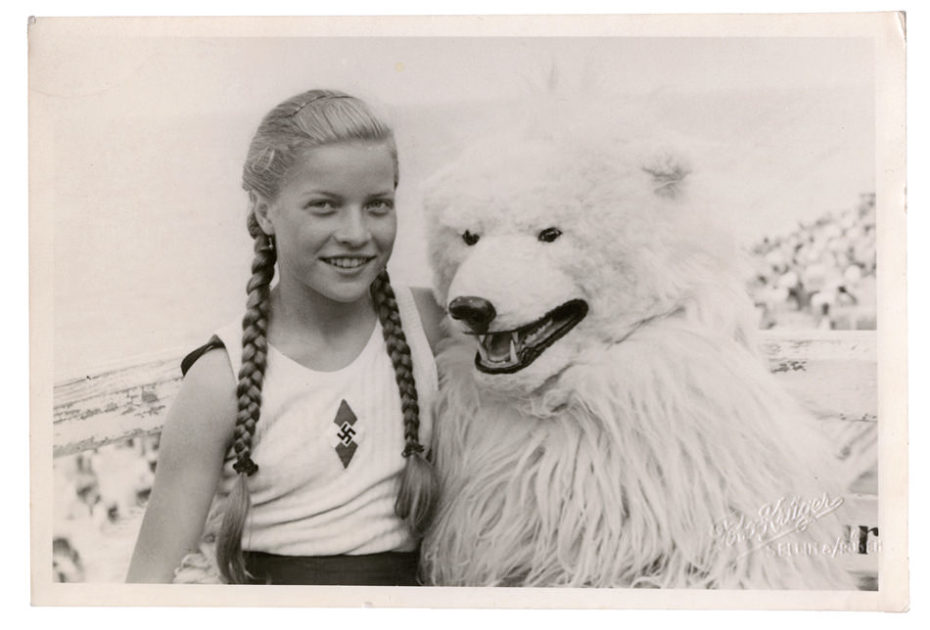
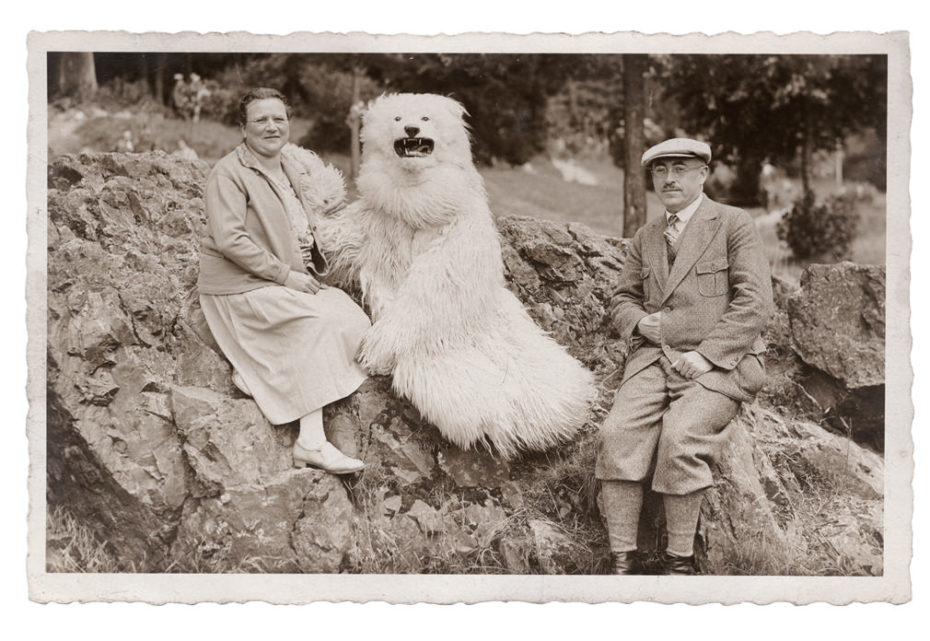
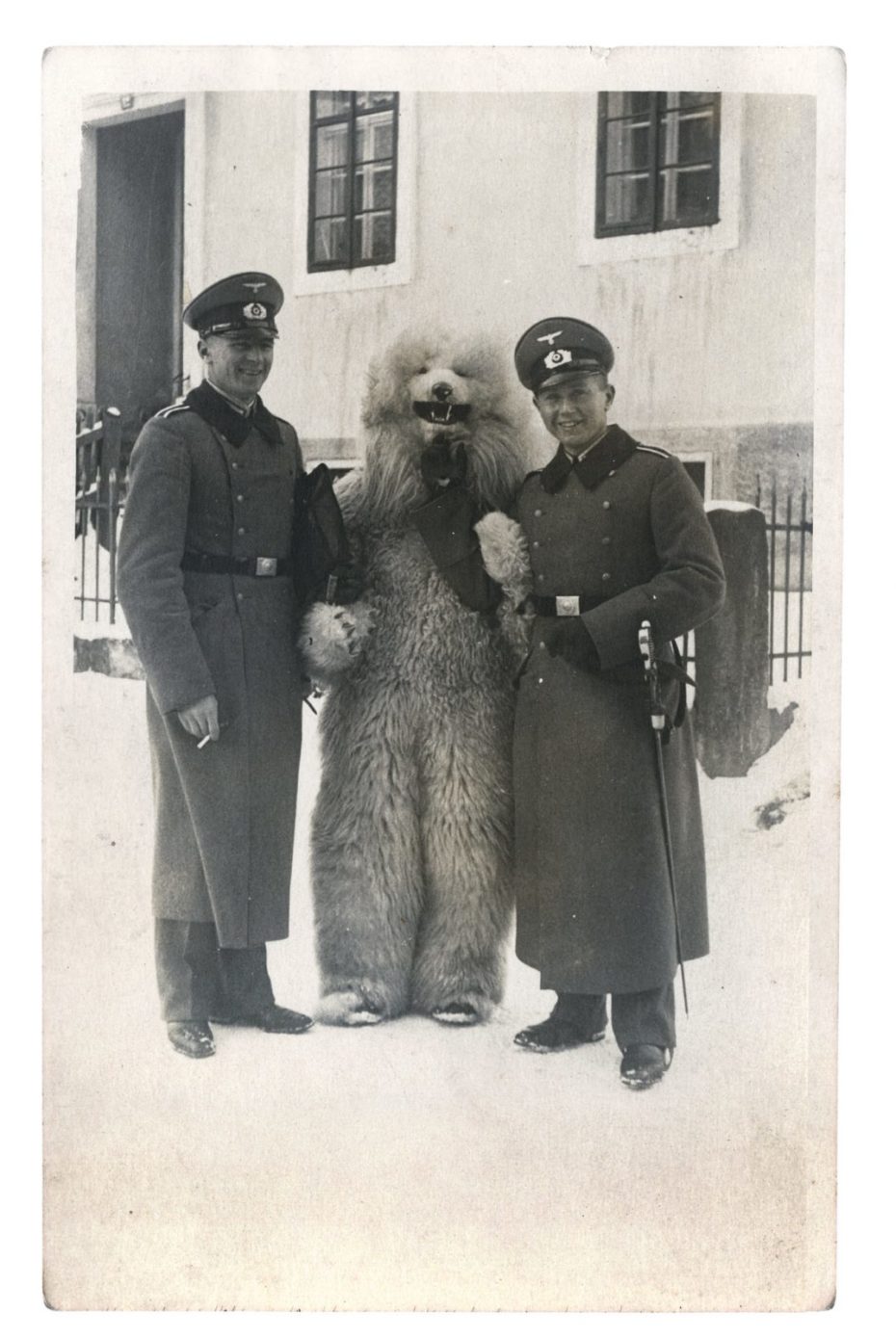
A French collector Jean-Marie Donat found his first polar bear photograph in the 1980s and has since been discovering these photos at flea markets, antique shops or auctions, amassing a collection of thousands and eventually publishing them in a 200-page book called TeddyBär.
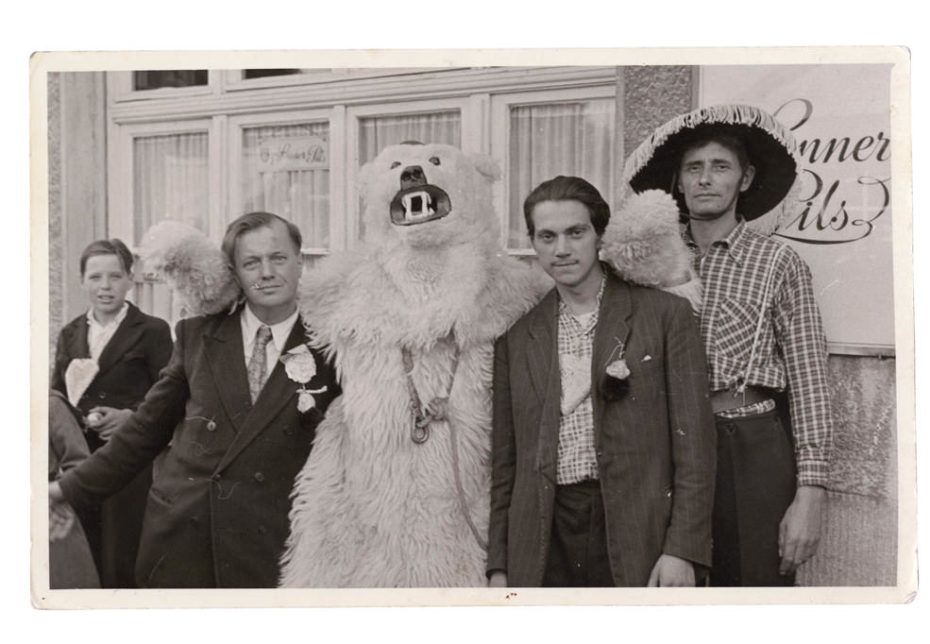
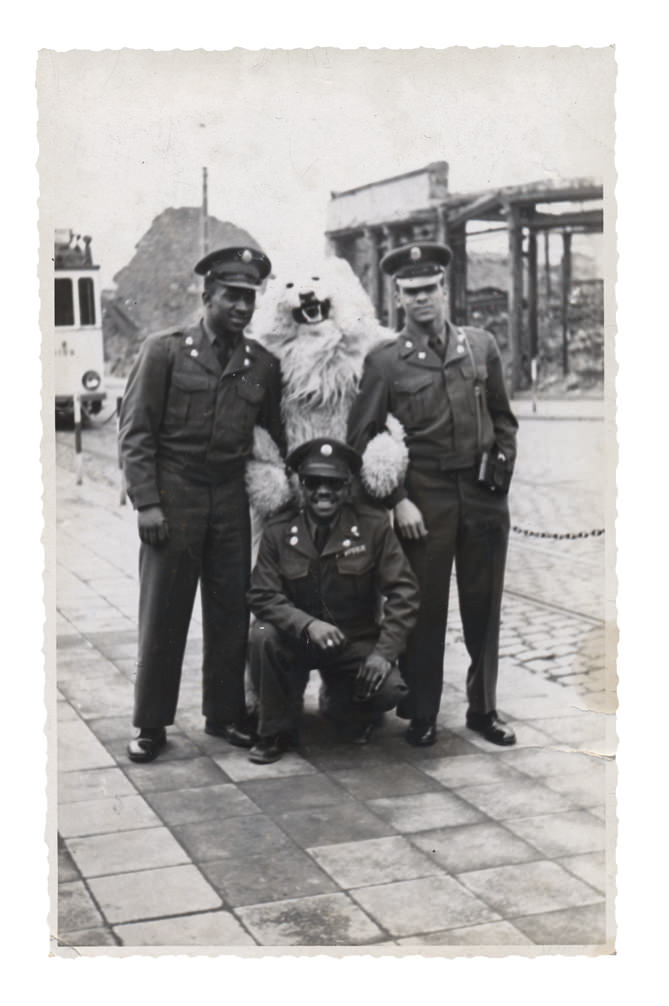
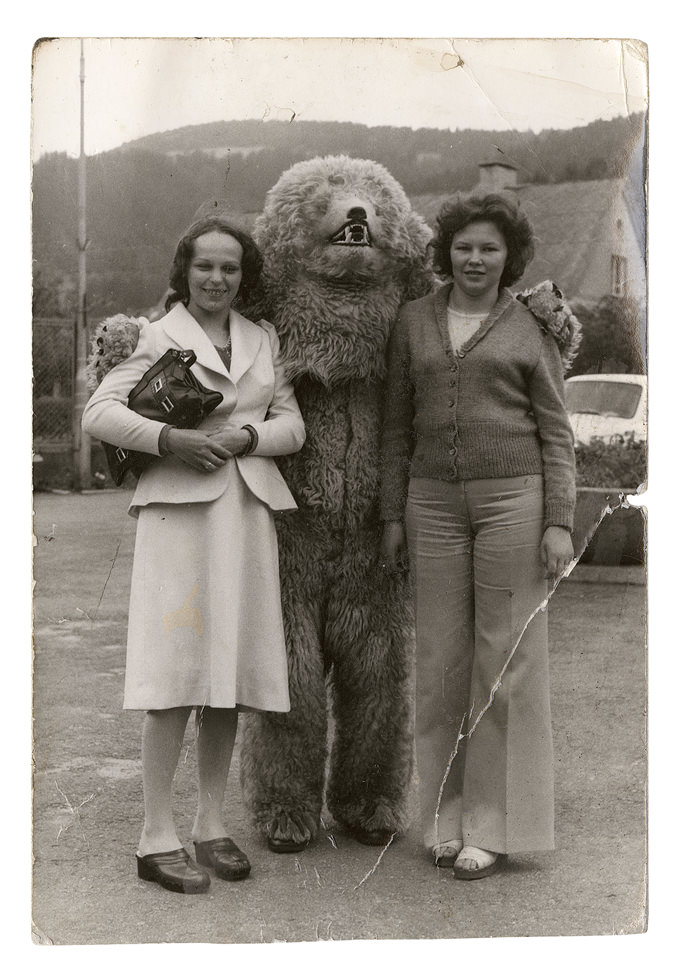
When Jean-Marie Donat published his book TeddyBär, it included a preface by an artist and philosopher, Klaus Speidel. In the text, Speidel uses the photographs as a writer’s prompt, imagining himself as the people inside the costumes who might have been hustling for some extra money at tourist resorts…
Sometimes it was odd. I would see people again, that night or another day. I’d feel I’d had a fine time with them, we’d had a laugh and all. But they of course, didn’t remember anything. They didn’t know me. In the beginning, I wanted to explain that I had been the bear. But they wouldn’t believe me, or it put them out. So I stopped. I resigned myself to leading a sort of double life. Days, I was a bear. Nights, I spent the money I’d earned. We carried on for at least five or six winters. Then came the war. We took it up again afterwards, for a bit. But it wasn’t so easy. There was less money even than before, and more competition. Other photographers had taken it up and sometimes, in the same town, you’d have four or five bears fighting over tourists. It got to be a bother for them, more than anything else.
Klaus Speidel, artist and philospher, TeddyBär
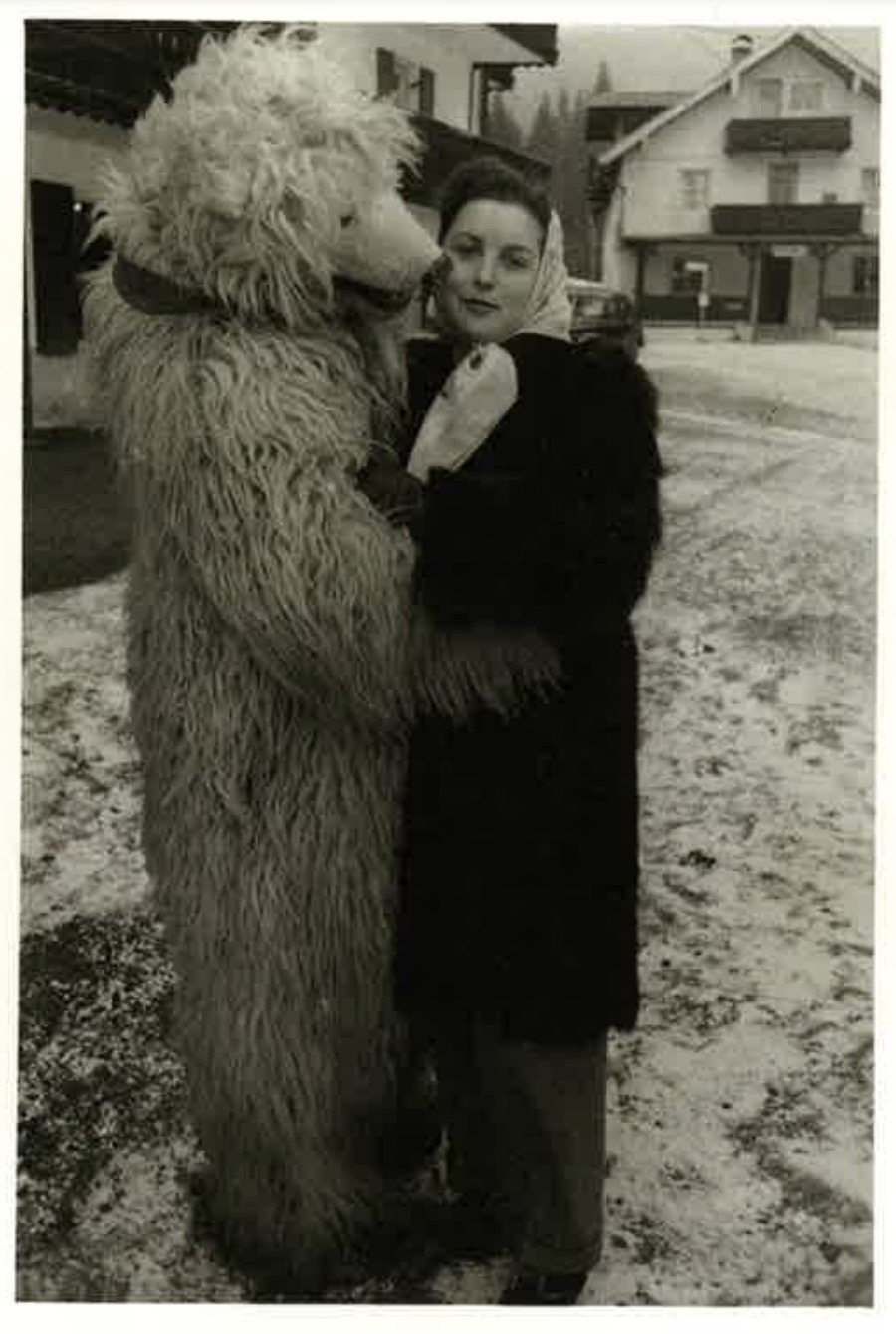
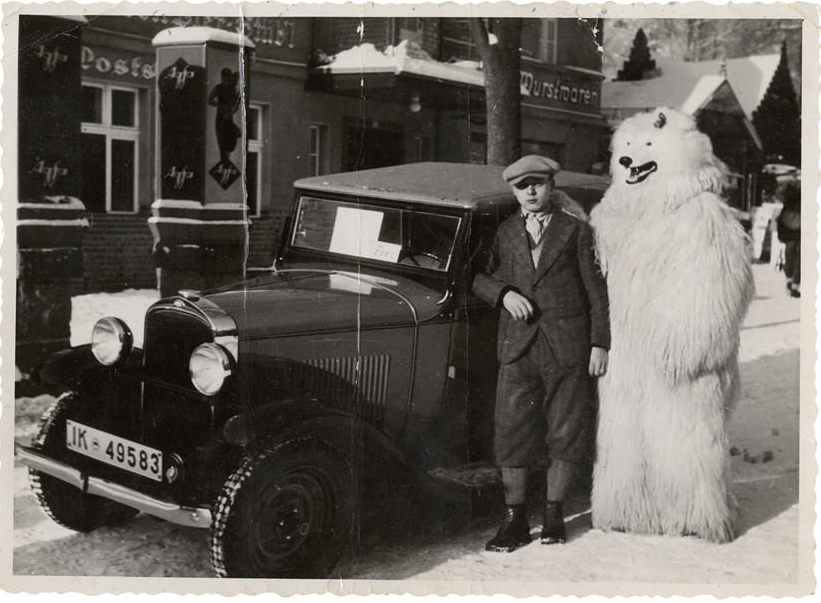
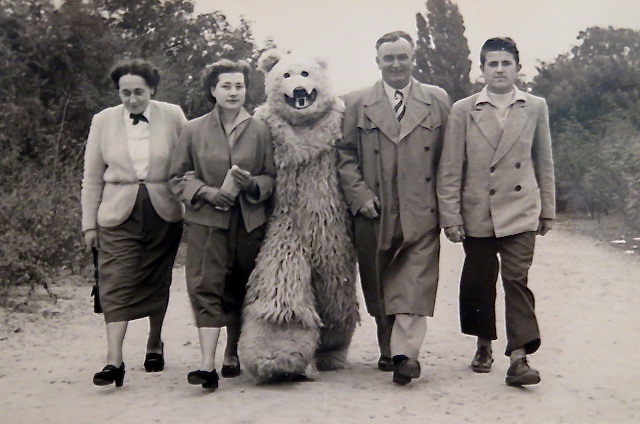
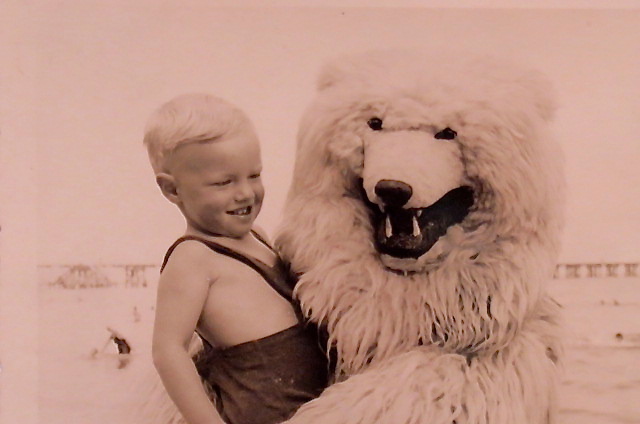
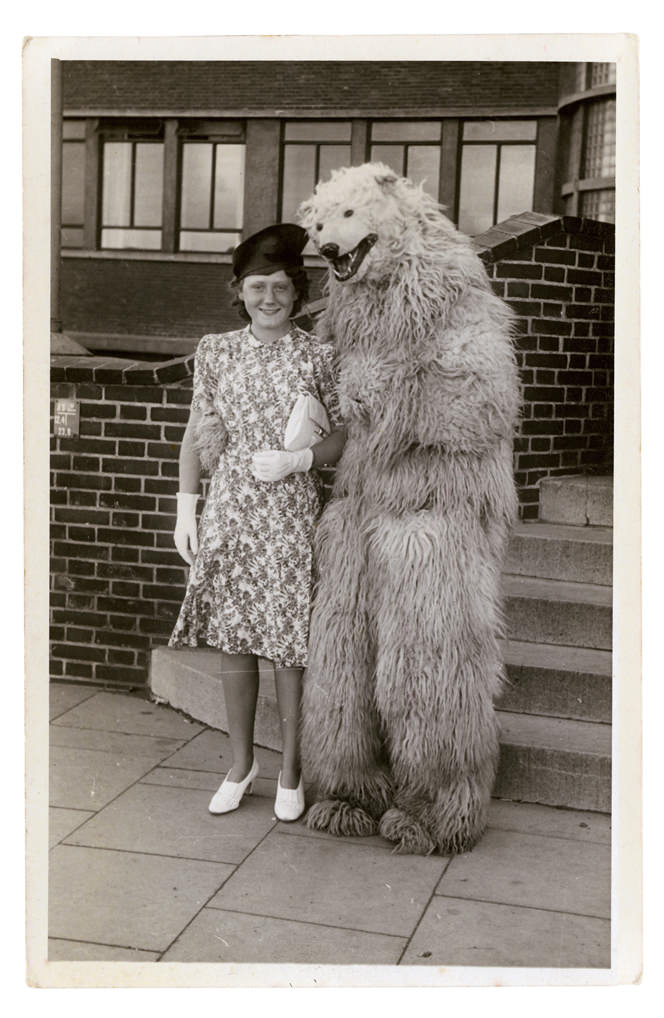
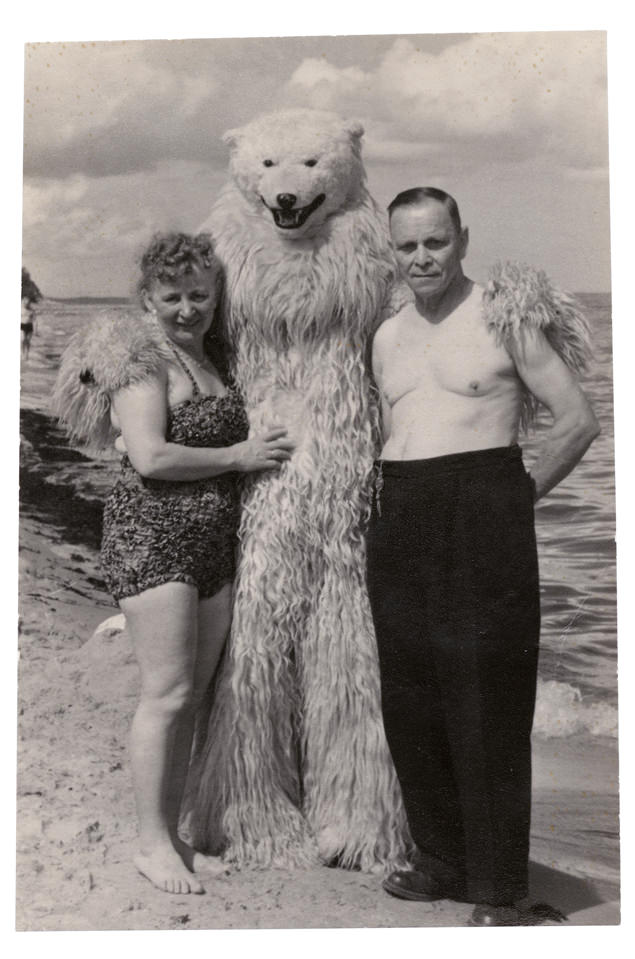
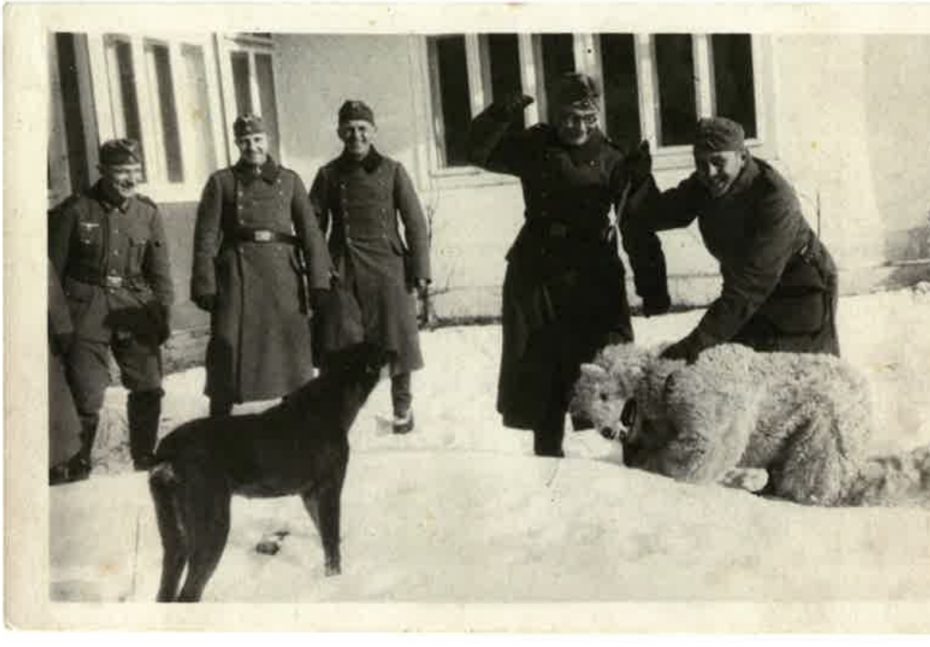
With time, I learned how to behave with different holidaymakers. The bear was a sort of character reader. He showed how seriously people took themselves. With some, it was best to keep your distance, acting submissive to flatter their dream of being a fearless explorer. Others, on the contrary wanted to play. This could go as far as a snowball fight. I was careful not to act too human. The more I acted the bar, the less I could be blamed. As a bear, I allowed myself to do things that would have got me slapped or worse if I had done them as a man. Who would get angry at a bear? It would be silly. And the reverse was true as well: I remember wandering hands and roguish looks! And the husband right there laughing. If his wife had gone half as far with a strange man, he would have given her a good hiding. But this was different. It was a bear. Who would get angry over a bear? Even […] Nazis always ended up laughing. Overall, during my time as a bear, I only saw people’s better side…
Klaus Speidel, artist and philospher, TeddyBär
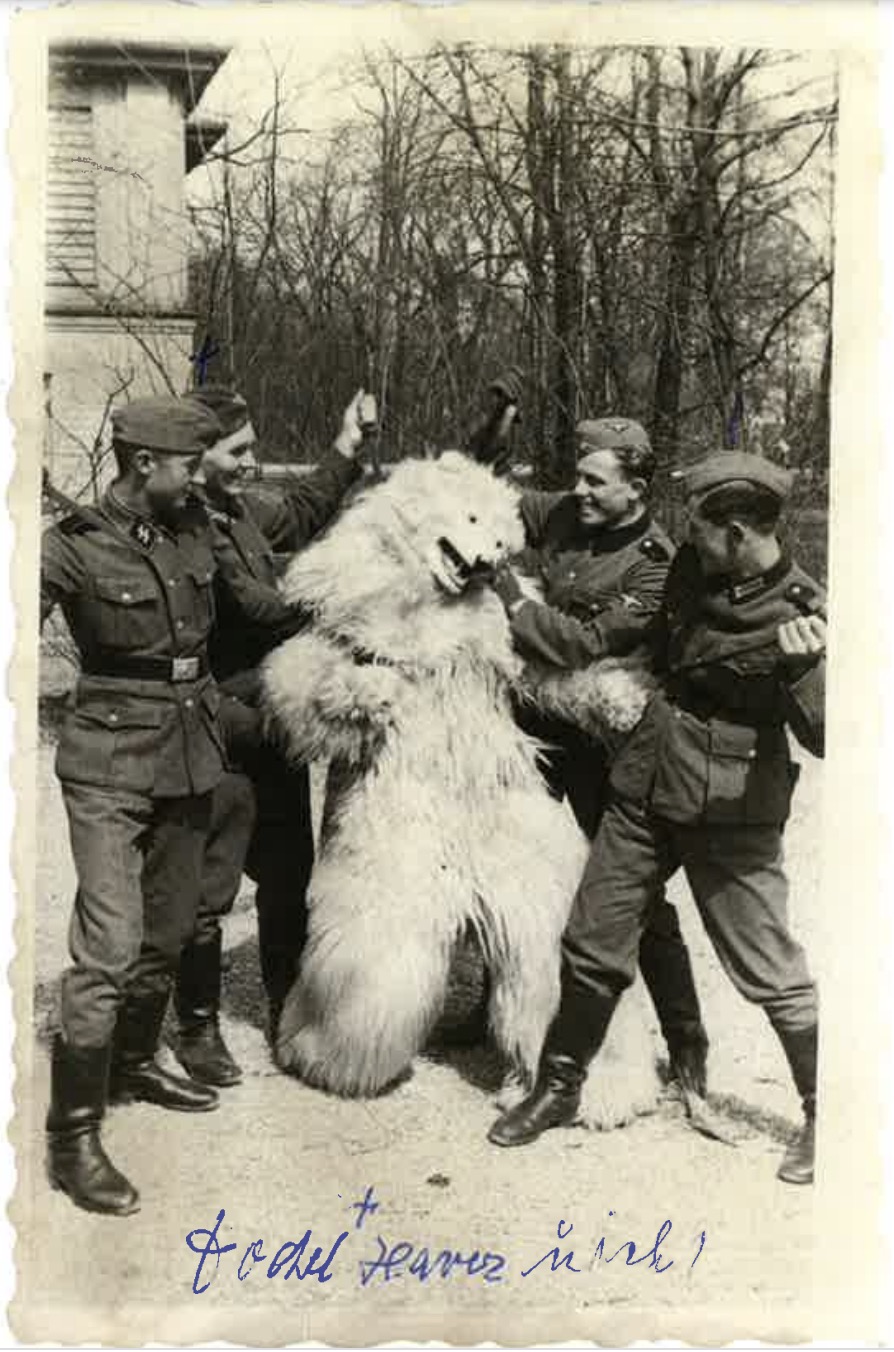
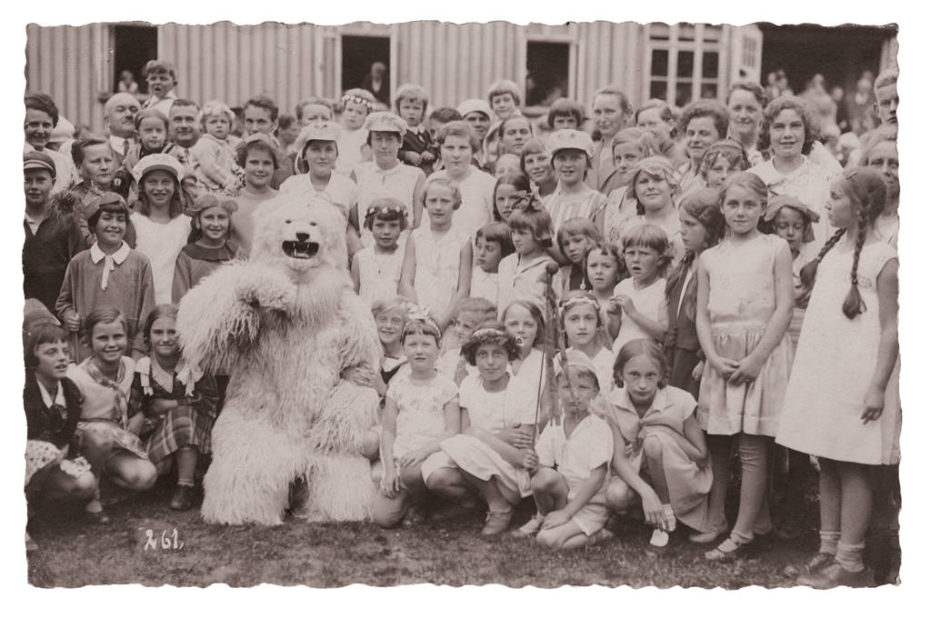
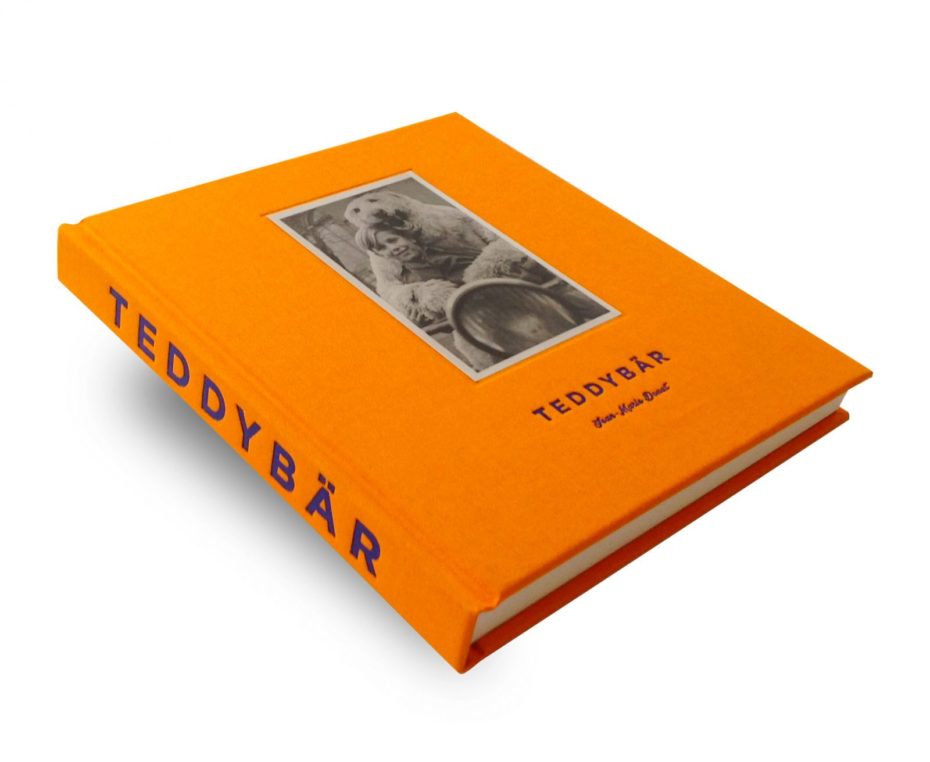
Only 500 copies of TeddyBär were printed. Find more about Jean-Marie Donat’s collections here.









